Showing Spotlights 97 - 104 of 237 in category All (newest first):
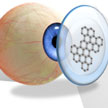 The latest example of a graphene-based wireless sensor that could make 24-hour healthcare easier to achieve by enabling wireless monitoring of various biomedical events in order to gain a more comprehensive assessment of the wearer's healthcare status. This novel device, which detects chemical/molecular agents and lengths of exposure, can be used as lightweight and transparent wearable or bio-implantable electronic sensor. It may provide an inexpensive way to detect in real-time the biomedical of interest.
The latest example of a graphene-based wireless sensor that could make 24-hour healthcare easier to achieve by enabling wireless monitoring of various biomedical events in order to gain a more comprehensive assessment of the wearer's healthcare status. This novel device, which detects chemical/molecular agents and lengths of exposure, can be used as lightweight and transparent wearable or bio-implantable electronic sensor. It may provide an inexpensive way to detect in real-time the biomedical of interest.
Jun 6th, 2016
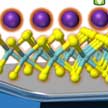 Nanomaterials like graphene and fullerenes provide an excellent platform to enhance weak signals from biomarkers. While graphene and fullerenes perform very well for detecting isolated biomarkers, their ability to amplify emission of biomarkers in a real physiological milieu is limited due to their strong interactions with other biomolecules such as proteins and lipids. A team of researchers now have developed new sensing platforms that use two-dimensional materials beyond graphene.
Nanomaterials like graphene and fullerenes provide an excellent platform to enhance weak signals from biomarkers. While graphene and fullerenes perform very well for detecting isolated biomarkers, their ability to amplify emission of biomarkers in a real physiological milieu is limited due to their strong interactions with other biomolecules such as proteins and lipids. A team of researchers now have developed new sensing platforms that use two-dimensional materials beyond graphene.
Apr 11th, 2016
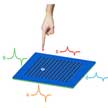 In order to make robots and robotic technology more human-like and more human-friendly, smart skin technology is a critical element that helps robots sense the world. These electronic or smart skins could help machines to accurately perceive the environment and better assist human owners. By applying the triboelectric effect and planar electrostatic induction, researchers for the first time have created a self-powered analogue smart skin.
In order to make robots and robotic technology more human-like and more human-friendly, smart skin technology is a critical element that helps robots sense the world. These electronic or smart skins could help machines to accurately perceive the environment and better assist human owners. By applying the triboelectric effect and planar electrostatic induction, researchers for the first time have created a self-powered analogue smart skin.
Apr 8th, 2016
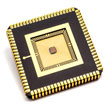 Our environment will slowly but surely evolve into an 'Internet of Things', where chips and sensors are integrated invisibly in the environment to assume their manifold tasks. Think of sensors that detect the presence of individuals and adapt the light in a building accordingly, resulting in serious energy savings. Those sensors will be, in a sense, the eyes, ears, and noses of our environment. At the recent ISSCC-conference, researchers have presented a number of remarkable developments. These may pave the way to a world where sensors assist us to drive more safely, live healthier, and make the planet more sustainable.
Our environment will slowly but surely evolve into an 'Internet of Things', where chips and sensors are integrated invisibly in the environment to assume their manifold tasks. Think of sensors that detect the presence of individuals and adapt the light in a building accordingly, resulting in serious energy savings. Those sensors will be, in a sense, the eyes, ears, and noses of our environment. At the recent ISSCC-conference, researchers have presented a number of remarkable developments. These may pave the way to a world where sensors assist us to drive more safely, live healthier, and make the planet more sustainable.
Mar 10th, 2016
 Researchers have explored common inexpensive materials to demonstrate their valuable and advantageous properties for artificial skin development. They demonstrate a scalable fabrication approach using off-the-shelf household items such as aluminum foil, scotch tapes, sticky-notes, napkins and sponges to build 'Paper Skin'. Paper Skin promises to be an affordable all-in-one flexibel sensing platform, applicable for applications such as health monitoring, 3D touchscreens, and human-machine interfaces, where sensing diversity, surface adaptability, and large-area mapping all are essential.
Researchers have explored common inexpensive materials to demonstrate their valuable and advantageous properties for artificial skin development. They demonstrate a scalable fabrication approach using off-the-shelf household items such as aluminum foil, scotch tapes, sticky-notes, napkins and sponges to build 'Paper Skin'. Paper Skin promises to be an affordable all-in-one flexibel sensing platform, applicable for applications such as health monitoring, 3D touchscreens, and human-machine interfaces, where sensing diversity, surface adaptability, and large-area mapping all are essential.
Feb 19th, 2016
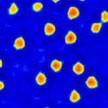 Many virus detection platforms, including conventional fluorescent label-based ones, have limitations because they are time-intensive and not easily compatible with point-of-care use without the existence of significant infrastructure and expert staff. Researchers have now developed a technique capable of specifically visualizing label-free single viruses in complex solutions in real-time. This approach eliminates virtually all sample preparation.
Many virus detection platforms, including conventional fluorescent label-based ones, have limitations because they are time-intensive and not easily compatible with point-of-care use without the existence of significant infrastructure and expert staff. Researchers have now developed a technique capable of specifically visualizing label-free single viruses in complex solutions in real-time. This approach eliminates virtually all sample preparation.
Feb 5th, 2016
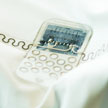 The future Internet of Things (IoT), with its intuitive applications, will operate based on an broad stream of data supplied by sensors placed everywhere. These will be sensors that are many times smarter and more sensitive than the ones we have today. They will also be produced and installed in far greater numbers and be much cheaper than they are now. For example, researchers envisage a radar that is capable of distinguishing pedestrians from cyclists. That technology might even allow to identify individuals from the way they walk.
The future Internet of Things (IoT), with its intuitive applications, will operate based on an broad stream of data supplied by sensors placed everywhere. These will be sensors that are many times smarter and more sensitive than the ones we have today. They will also be produced and installed in far greater numbers and be much cheaper than they are now. For example, researchers envisage a radar that is capable of distinguishing pedestrians from cyclists. That technology might even allow to identify individuals from the way they walk.
Jan 18th, 2016
 Researchers have developed a suspended planar-array chip whose in situ capabilities with a spatial molecular-probe arrangement combine the advantages of both suspended arrays and planar arrays. This opens the way towards the multiplexed detection of intracellular biological parameters using a single device in dramatically reduced volumes, such as inside a living HeLa cell. The chip's volume represents only about 0.35% of the total volume of a typical HeLa cell.
Researchers have developed a suspended planar-array chip whose in situ capabilities with a spatial molecular-probe arrangement combine the advantages of both suspended arrays and planar arrays. This opens the way towards the multiplexed detection of intracellular biological parameters using a single device in dramatically reduced volumes, such as inside a living HeLa cell. The chip's volume represents only about 0.35% of the total volume of a typical HeLa cell.
Dec 29th, 2015
 The latest example of a graphene-based wireless sensor that could make 24-hour healthcare easier to achieve by enabling wireless monitoring of various biomedical events in order to gain a more comprehensive assessment of the wearer's healthcare status. This novel device, which detects chemical/molecular agents and lengths of exposure, can be used as lightweight and transparent wearable or bio-implantable electronic sensor. It may provide an inexpensive way to detect in real-time the biomedical of interest.
The latest example of a graphene-based wireless sensor that could make 24-hour healthcare easier to achieve by enabling wireless monitoring of various biomedical events in order to gain a more comprehensive assessment of the wearer's healthcare status. This novel device, which detects chemical/molecular agents and lengths of exposure, can be used as lightweight and transparent wearable or bio-implantable electronic sensor. It may provide an inexpensive way to detect in real-time the biomedical of interest.
 Subscribe to our Nanotechnology Spotlight feed
Subscribe to our Nanotechnology Spotlight feed





